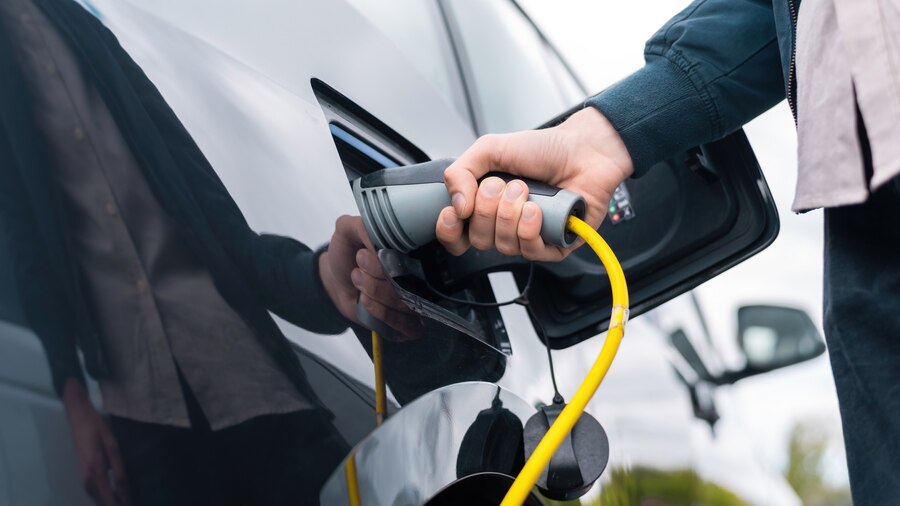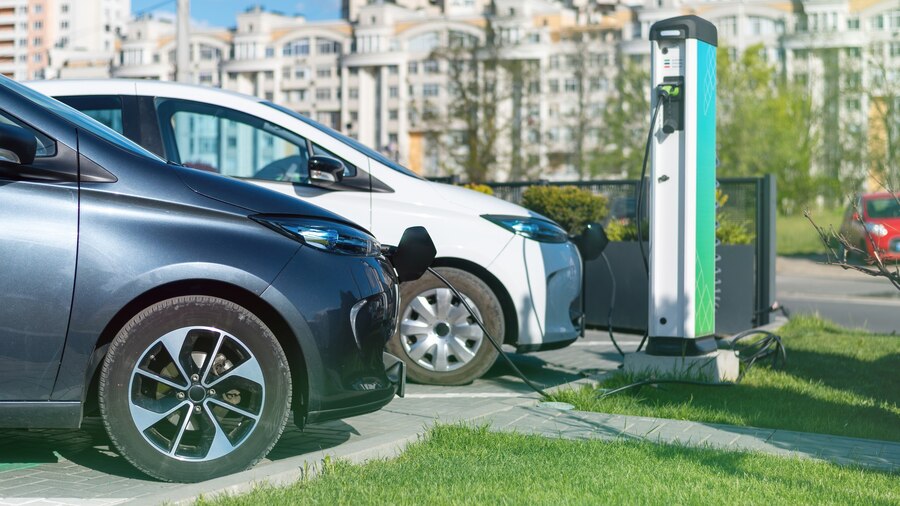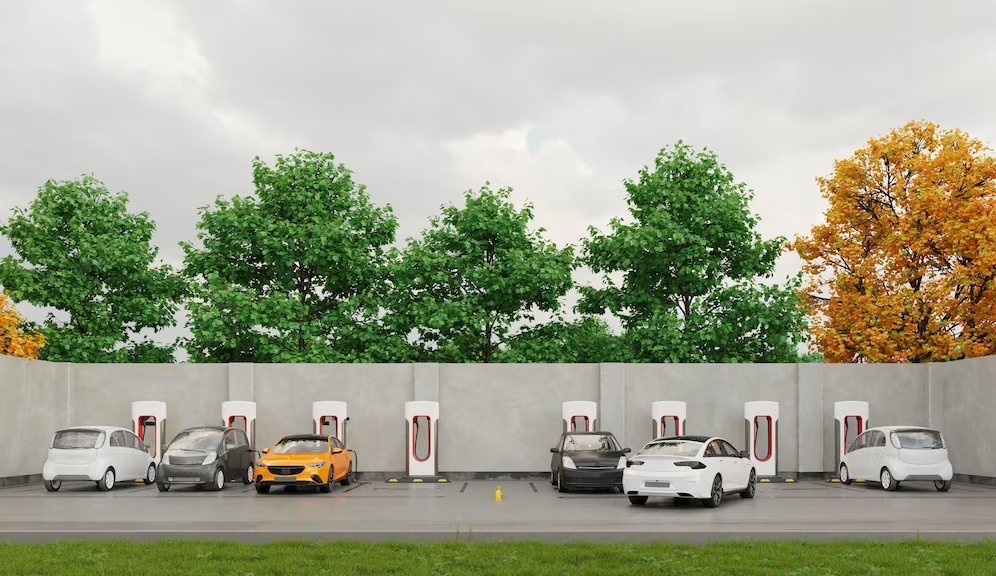Innovations in EV Charging: The Distributed Design Approach
- 0.1 The Dawn of Distributed Charging
- 0.1.1 The Evolution from Centralized Systems
- 0.1.2 Introducing Distributed Charging
- 0.1.3 Benefits for the Consumer and the Grid
- 0.2 2. The Tech Innovations Driving Distributed Charging
- 0.2.1 Modular Power Systems
- 0.2.2 Advanced Software Integration
- 0.2.3 Material Innovations and Sustainability
- 0.3 The Impact of Distributed Charging on Urban Planning
- 0.4 Distributed Charging: A Case Study in Efficiency
- 0.4.1 Maximizing Charger Uptime
- 0.4.2 Reducing Infrastructure Strain
- 0.4.3 Streamlining Energy Consumption
- 0.5 The Economics of Distributed EV Charging
- 0.6 Customization and User Experience in EV Charging
- 0.6.1 Personalized Charging Experiences
- 0.6.2 Integration with Smart Technologies
- 0.6.3 Enhancing the Network with Modular Solutions
- 0.7 7. Looking Forward: The Future of EV Charging
The Dawn of Distributed Charging
The Evolution from Centralized Systems
The electric vehicle (EV) revolution has necessitated a paradigm shift in how we think about fueling our vehicles. The early days of EV charging were marked by centralized systems, which, while pioneering, posed significant limitations in scalability and efficiency. As the number of EVs on the road began to surge, the demand for more accessible and faster charging solutions became apparent. Centralized charging stations, often requiring long waits and suffering from downtimes due to maintenance or failure, clearly needed an overhaul to keep pace with the burgeoning EV market.
Introducing Distributed Charging
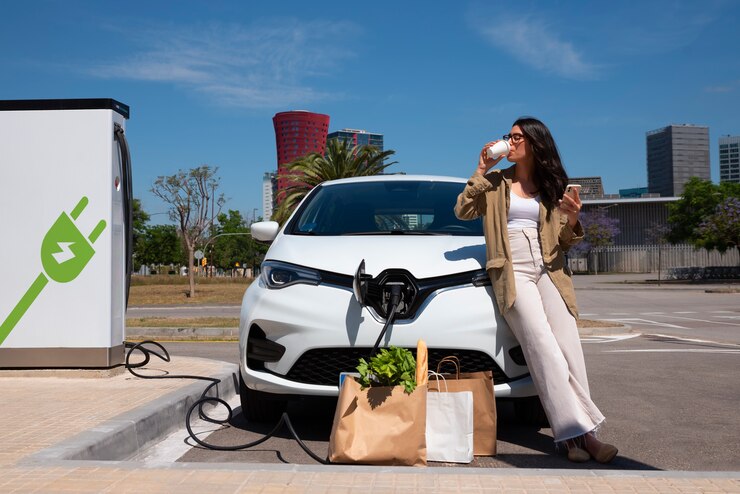
The introduction of distributed charging systems marked a new chapter in the EV narrative. Unlike their centralized predecessors, these systems harness the power of decentralization, distributing the charging load across multiple points and thus reducing bottlenecks. This approach not only enhances the capacity of charging networks but also ensures that the failure of a single point doesn’t cripple the entire system. It’s akin to the internet architecture – robust, redundant, and remarkably resilient.
Benefits for the Consumer and the Grid
The consumer benefits of distributed charging are manifold. They translate into shorter wait times, more locations, and ultimately, a more reliable charging experience. But the advantages extend beyond the consumer to the very grid that powers them. Distributed systems can smartly manage the load, reducing peak demand pressures on local power grids. This intelligent load distribution is crucial as we steer towards a future where renewable energy sources will play a pivotal role in electricity generation.
2. The Tech Innovations Driving Distributed Charging
Modular Power Systems
The core of distributed charging lies in its modular power systems. These systems allow for the addition of charging points without the need for extensive upgrades to the core infrastructure. This modularity means that as demand increases, so too can the charging capacity, with minimal disruption and maximum cost-efficiency. This scalability is key in urban areas, where space is at a premium and flexibility is essential.
Advanced Software Integration
Software is the unsung hero of distributed charging systems. Advanced software solutions enable real-time management of charging demands, optimizing energy distribution based on usage patterns and grid capacity. They also facilitate seamless user experiences, from mobile app integration for charger location and availability to payment processing and loyalty programs.
Material Innovations and Sustainability
Sustainability is not just about powering vehicles with electricity rather than fossil fuels; it’s also about the materials and methods used to build the infrastructure. Innovations in materials science have led to more durable, weather-resistant, and sustainable components for EV chargers. Coupled with the design improvements that minimize waste and maximize recyclability, the distributed approach is as much about green materials as it is about green energy.
The Impact of Distributed Charging on Urban Planning
Revitalizing Urban Spaces
The rise of distributed charging is having a profound impact on urban planning. Cities, once designed around the needs of petrol stations, are now reimagining public spaces with EV charging capabilities in mind. From integrating chargers into existing parking meters to incorporating charging points in new residential and commercial developments, the implications for urban design are vast and varied.
Encouraging EV Adoption
By increasing the visibility and availability of charging points, distributed charging systems directly encourage EV adoption. When drivers are confident that they can charge their vehicle with the same ease as filling up at a petrol station, the barrier to choosing an EV over a traditional car lowers significantly. This shift is crucial in meeting carbon reduction targets and creating more sustainable urban environments.
The Challenge of Coordination
However, this renaissance in urban infrastructure is not without its challenges. Coordination between city planners, utility companies, and charging network providers is essential. There is a delicate balance to be struck between deploying sufficient charging points to meet demand and ensuring that the deployment is in line with the city’s broader environmental and infrastructural plans.
Distributed Charging: A Case Study in Efficiency
Maximizing Charger Uptime
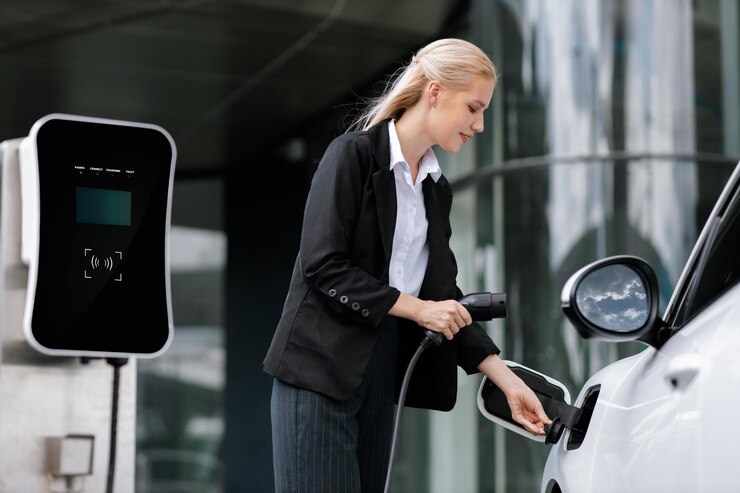
One of the most significant advantages of distributed charging is the maximization of charger uptime. With multiple units in operation, maintenance or failure of one unit doesn’t spell a complete service outage. This reliability is critical for driver confidence and is a cornerstone of the distributed design philosophy.
Reducing Infrastructure Strain
Distributed charging systems are not just about the chargers themselves but also about the infrastructure that supports them. By dispersing the energy demand across a wider area, these systems significantly reduce the strain on any single point of the power grid, thereby enhancing overall efficiency and reducing the need for costly grid upgrades.
Streamlining Energy Consumption
Efficiency also means streamlining energy consumption. Distributed systems can dynamically adjust charging rates based on grid demand, time of day, and even individual customer needs. This flexibility helps to flatten peak demand curves and allows for more energy to be drawn during off-peak hours, which often coincides with times when renewable energy sources like wind and solar are producing surplus power. The ability to dovetail charging habits with renewable energy production epitomizes the efficiency of distributed charging systems.
The Economics of Distributed EV Charging
Cost-Effective Expansion
The distributed design approach to EV charging infrastructure offers a more cost-effective expansion model. By using data-driven analyses to identify optimal locations for chargers, businesses and municipalities can avoid overbuilding and concentrate resources where they are most needed. This strategic placement minimizes initial capital outlay and maximizes return on investment.
New Revenue Streams
Distributed charging opens up new revenue streams for a variety of stakeholders. Retailers, for example, can host charging stations, drawing in customers who can shop while they charge. Real estate developers can increase property values by integrating charging into their projects. And utility companies can generate additional revenue through managed charging services.
Economic Incentives and Policies
Government incentives and policies play a crucial role in the economics of distributed charging. Tax credits, rebates, and grants can lower the barrier to entry for new players and support existing businesses as they expand their networks. Furthermore, regulations that encourage or mandate the installation of EV charging stations in new developments can accelerate the growth of distributed charging infrastructure.
Customization and User Experience in EV Charging
Personalized Charging Experiences
In the realm of distributed charging, personalization is key to enhancing the user experience. Users can choose from a variety of charging options that best fit their schedule and budget. From high-speed DC chargers for a quick top-up to overnight AC options for more leisurely refueling, the flexibility of distributed charging systems caters to a diverse user base.
Integration with Smart Technologies
The integration of smart technologies is taking the EV charging experience to new heights. Features like reservation systems, real-time availability updates, and automatic payment processing make the process seamless and hassle-free. In the future, we can expect even more sophisticated integration with vehicle systems, enabling features such as automatic charger detection and preference-based charging schedules.
Enhancing the Network with Modular Solutions
In this burgeoning landscape, companies like ChargeTronix are making their mark with modular, robust, and powerful charging solutions that epitomize the distributed design philosophy. ChargeTronix chargers, with their ability to power multiple dispensers from a single power cabinet, exemplify the customization potential inherent in distributed systems. Their products, ranging from integrated payment systems to advanced cord management, offer a tailored charging experience that meets the specific needs of each client, while partnerships with industry leaders further cement their role as innovators in this space.
7. Looking Forward: The Future of EV Charging
Sustainability and Beyond
As we look to the future of EV charging, sustainability remains at the forefront. The next generation of distributed charging infrastructure will not only support the growing fleet of electric vehicles but will also integrate seamlessly with renewable energy systems, contributing to a more sustainable and resilient energy ecosystem.
Innovation in Charging Technologies
Innovation will continue to drive the evolution of EV charging technologies. We can anticipate advances in battery technology that allow for faster charging times, as well as the development of wireless charging capabilities. The goal will be to make charging as convenient and as ubiquitous as using a smartphone, with the same expectation of constant, unobtrusive accessibility.
The Role of Policy and Consumer Behavior
The trajectory of EV charging infrastructure will also be shaped by policy decisions and consumer behavior. Government policies that support the development of distributed charging networks will be crucial, as will be the willingness of consumers to embrace electric vehicles. The symbiotic relationship between infrastructure and vehicle adoption will determine the pace at which we move towards a fully electrified transportation landscape.

